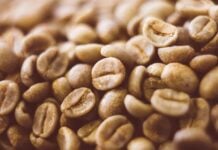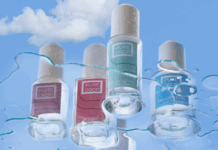The FEBEA regrets the approximate and anxiety-provoking methodology used by 60 Millions de consommateurs in its latest special issue on cosmetics.
The Fédération des Entreprises de la Beauté (FEBEA), which represents cosmetics companies, would like to respond to the special issue on cosmetics published by 60 Millions de Consommateurs, which claims to be able to list the "safest" products.
For FEBEA President Patrick O'Quin: "It's perfectly legitimate for consumer associations to want to decipher and/or test consumer products, such as cosmetics. However, once again, the aim here is not so much to inform as to worry the consumer with illegible, anxiety-provoking ratings. Moreover, at no point is the effectiveness of a product taken into account. This doesn't seem to me to be the right method.
● The world's safest regulations
In particular, the article states that "less than a third of toxic-free products is still too few", implying that two-thirds of the products tested contained "toxic" ingredients. In this respect, the FEBEA points out that all cosmetics sold in France comply with European cosmetics regulations, which are the strictest in the world. All the substances singled out by 60 Millions de Consommateurs are therefore authorized by the regulations and by the health authorities, who regularly re-evaluate them, even more so when their harmlessness is potentially called into question, as the magazine itself acknowledges.
● An approximate methodology that does not really allow relevant conclusions to be drawn
The special issue published by 60 Millions de consommateurs itself acknowledges several limitations to its exercise: "To assess the risk of using a cosmetic, we would need to know the exact concentration of the substances it contains. However, the list of ingredients gives only their nature, in descending order of concentration. This would also mean taking into account exposure not only to the cosmetic under evaluation, but also to other consumer products (cleaning products, clothing, food) containing the same substances". It's hard to accurately assess the impact of a substance under these conditions...
Similarly, the magazine itself sometimes limits the scope of its criticism, for example with regard to allergens: "even if their presence in a cosmetic does not mean that the consumer will necessarily develop an allergy. Approximately 3 % of the population would be sensitive to fragrance allergens." So, is it appropriate to describe as "toxic" products that would only be disadvantageous for people who are allergic, sensitized and therefore vigilant about the composition of the products they use?
● Cosmetics companies mobilize for greater transparency
In response to consumers' legitimate need for transparency on cosmetic products, in mid-November FEBEA launched CLAIRE, an application for deciphering ingredients.
Developed with the Société Française de Cosmétologie, CLAIRE provides information on over 25,000 ingredients found in cosmetic products. Aimed primarily at industry professionals (such as sales advisors), it is also available to consumers, to help them make a free and informed choice. More information on CLAIRE
Patrick O'Quin concludes: "Cosmetics companies are constantly seeking to improve their formulations to guarantee both the efficacy and safety of their products. They are also committed to transparency, so that consumers can make informed product choices. Finally, they are based on strict regulations, laid down and monitored by the French and European health authorities, in whom it is essential to have complete confidence.








